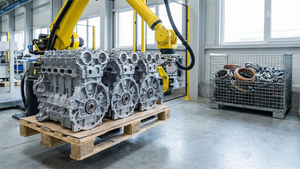With a rapidly deteriorating global economy, frequent product delays, increased competition, and political instability, it may need more funding to realize its goals.
Intel’s (NASDAQ: INTC) sizable dividend payment is an excellent place to start looking at it. Even while the chipmaker has paid a steady dividend for the last three decades, it must do everything it takes to secure its future, even if it means reducing its dividend payments altogether.
At $37.78, Intel’s stock price ended the day down by 2.2 percent from its previous finish the day before. This year, it’s down 27%.
Our journey has taken us to where we are now. Gelsinger’s turnaround plan of speeding up product iteration and expanding the foundry business was on track only months ago.
In January, the board of directors upped the company’s annual cash dividend by 5% to $1.46 per share, or nearly $6 billion. It was projected that PC sales would go up in the second half of the year despite inflationary headwinds, which management repeated in April. There were 2022 predictions of $76 billion in revenue, $27 billion in capital expenditures, and around $1.5 billion in negative free cash flow at the time.
Now it looks as though the advice is beyond reach. During an investor conference earlier this month, Intel’s Chief Financial Officer David Zinsner noted that the current quarter’s macro environment and component supply challenges were worse than expected. The company’s expectations may need to be revised as a result of his remarks and retailers’ increased use of discounts.
Intel refused to comment on the financial concerns that may affect its full-year projection. As stated in an emailed statement, the corporation is still “dedicated to a healthy and increasing dividend.”
Despite the challenging economic climate, Intel’s core product performance remains a source of concern. The corporation has been losing market share in the highly profitable data-center server industry for several years already. With AMD –6.24 percent (AMD) data-center sales more than doubling due to its better-performing processors, its data-center segment produced nearly $26 billion in 2021 – flat year over year.
If you’re looking for the fastest servers, you’ve got to go with AMD, Morgan Stanley analyst Joe Moore said in a note last week.
According to the most recent trends, AMD may continue to gain market share. According to Intel VP Sandra Rivera, the company’s next Sapphire Rapids server CPU will be delayed and may not surpass AMD’s upcoming Genoa processor.
When asked by Barron’s on Monday whether Genoa is on schedule to ship later this year, AMD CEO Lisa Su replied that it is and expressed confidence in its market positioning versus Sapphire Rapids. She remarked, “The data center is AMD’s largest bet.” “From a performance, performance per watt, and total cost of ownership basis, we believe Genoa is the leader.” This is what our consumers are telling us as well.”
It’s not only computers that Intel is having problems with. The new graphics processor range from the firm has been delayed and does not seem to be competitive. Intel’s graphics offering may be this year’s “most lackluster hardware release,” according to Techspot, a widely-read technology website.
If Intel’s product and economic woes are combined, it will be forced to make difficult choices.
According to Zinsner, Intel intends to produce break-even free cash flow in 2023 and 2024 on the premise of mid-to-high single-digit sales growth, at the company’s investor day in February. At Barron’s Investing in Tech Conference on Thursday, he claimed the company’s capital investment projections for the next five years are over $100 billion. This means that unless other areas of the budget are cut, those projected cash flows will be off the mark if revenue is lower than expected, which seems likely given Intel’s recent struggles. It’s time to let go of something.
Then there’s the stalemate in the House of Representatives. If the CHIPS Act, which contains $52 billion in incentives for domestic semiconductor production and research, does not pass, Intel warned government officials that the pace of its investment for its new multibillion-dollar manufacturing facility might be scaled down.
However, Intel’s dividend should be the first item to go before any other changes are made. Intel’s $6 billion-a-year dividend payments to stockholders may be better spent on R&D and capital expenditures.
After four years of lowering dividends, Intel has an additional $24 billion for research and development. This compares to Nvidia’s (NVDA) overall R&D expenditure of $5.3 billion last year.
Some income investors may decide to sell their Intel shares if the company no longer pays a dividend. As a result of Intel’s shareholder return strategy, Wall Street isn’t paying Intel a premium of more than 11 times its earnings. And if the chipmaker returns to profitability, it may always reinstate a dividend.
For the time being, Intel must accept its difficult financial situation and make full use of all available financial resources. As a result, Intel’s dividend payment should be discontinued. This is the sensible and correct thing to do.
The post Intel CEO, Pat Gelsinger Has Pledged to Increase Capital Expenditure by Tens of Billions of Dollars Under His Leadership. appeared first on Best Stocks.






